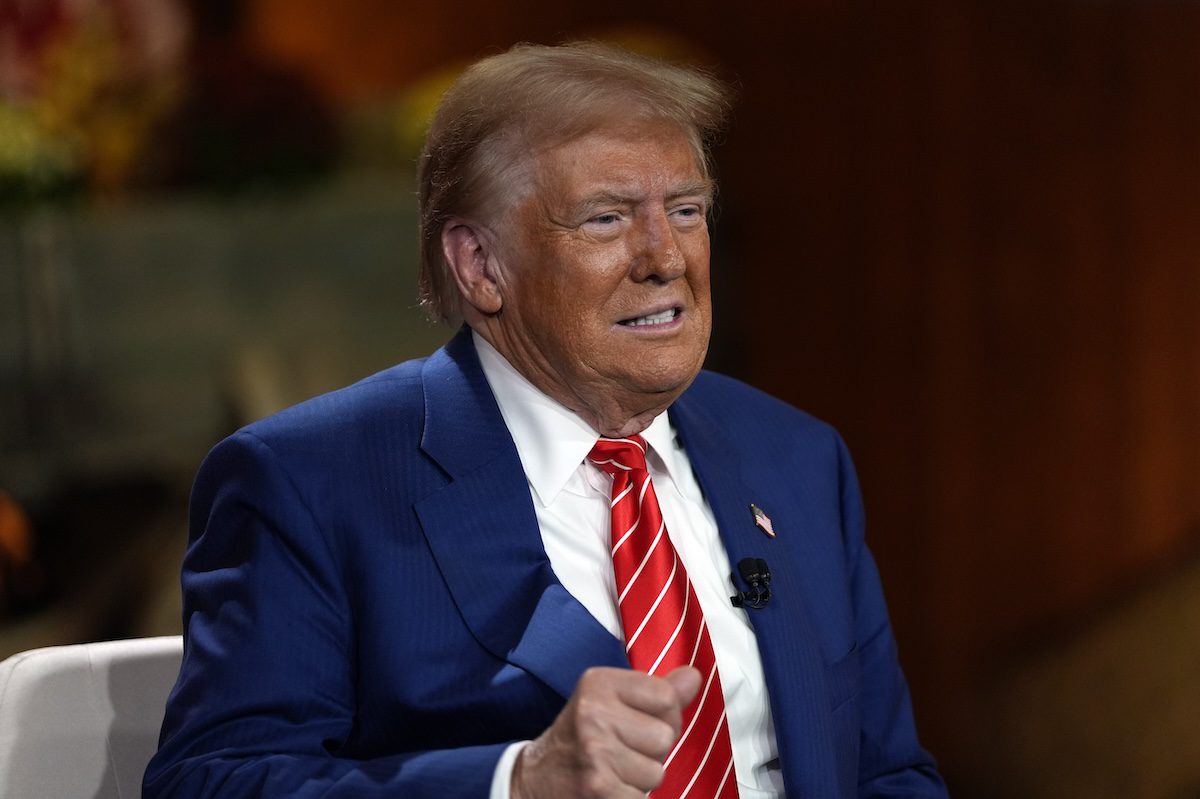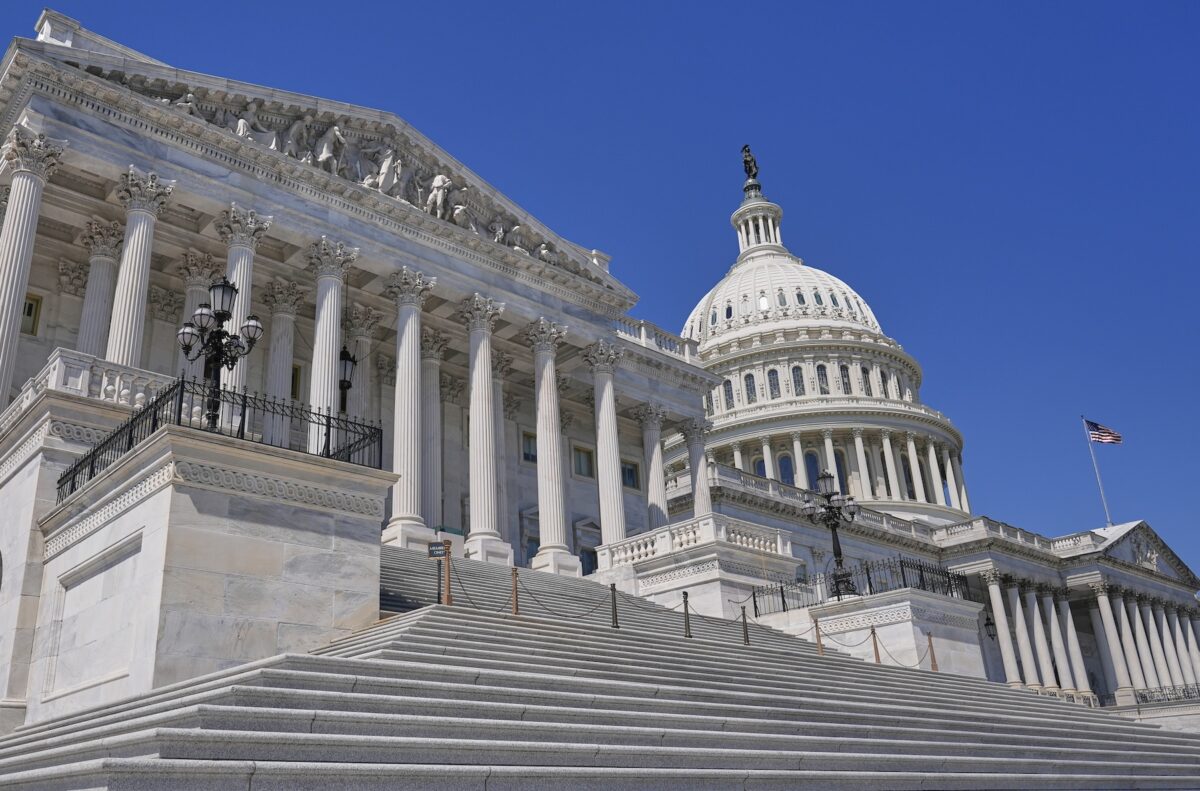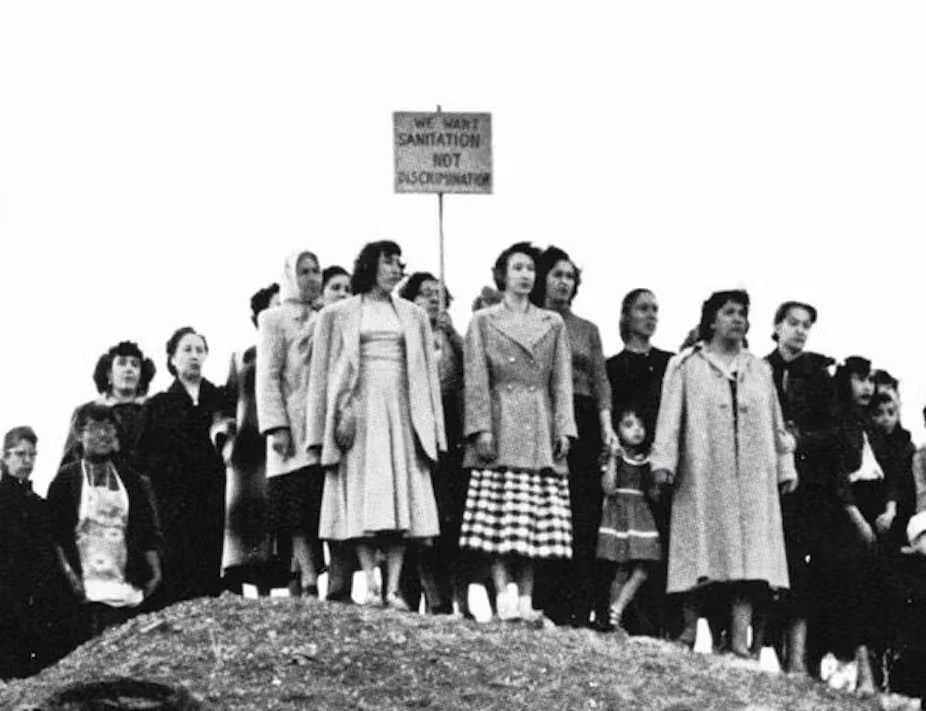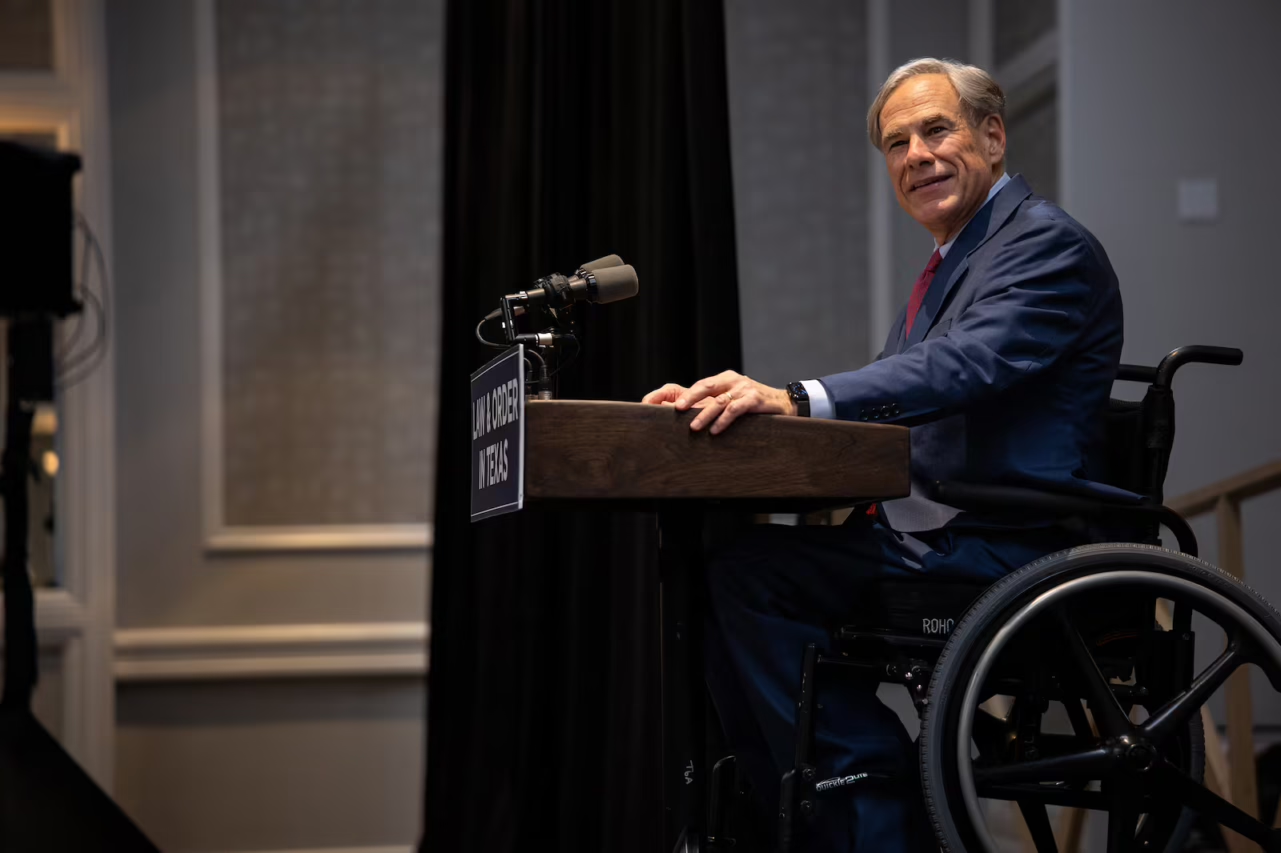
Republican presidential nominee former President Donald Trump speaks during a break in a Fox News town hall with Harris Faulkner at The Reid Barn, Tuesday, Oct. 15, 2024, in Cumming, Ga. (AP Photo/Julia Demaree Nikhinson)
Trump’s plan would effectively be a sales tax that disproportionately harms working-class families and could cause a trade war that hurts US companies, economists say.
As the days and weeks continue to dwindle in the runup to the Nov. 5 presidential election, economists and tax experts are expressing growing concern over Donald Trump’s plan to impose sweeping tariffs they say would almost certainly raise prices on virtually every imported good and considerably weaken the US economy.
Though Trump has been sparse on details for many of his policy proposals on the campaign trail in his third bid for the White House, the billionaire and former Republican president has spelled out perfectly clear his plans to impose a universal baseline tariff on all US imports.
That rate could range between 10% to 20%, with separate plans for a 60% tariff on all American imports from China, according to the Tax Foundation.
During a Tuesday interview with Bloomberg Editor-In-Chief John Mickelthwait in front of the Economic Club of Chicago, Trump even floated a 2,000% tariff on foreign vehicles, and said he believes his plan will not only lower prices to pre-pandemic levels of inflation, but also spur a surge in manufacturing jobs to return to the US.
But several economic groups, policy experts, and think tanks in recent weeks have come to a different conclusion that Trump’s tariff plan would effectively act as a sales tax that disproportionately affects lower- and middle-class earners more than wealthier ones.
Mary Lovely, a senior fellow at the Peterson Institute for International Economics and a professor emeritus of economics at Syracuse University, is one of those skeptical of Trump’s tariff plan.
“I think a lot of economists have been afraid to kind of call it like it is, but with the election so close, we see what’s happening, we’re running the numbers and we’re trying to flash a red light saying that this is a big deal,” Lovely said in an interview. “This [plan] is the fastest way to erode US leadership and to reduce the living standard of Americans.”
According to a new report from the Institute on Taxation and Economic Policy (ITEP), the 80% of Americans who earn under $157,500 per year would pay an average of $2,872 more annually as a result of Trump’s tariffs – on products ranging from food, liquor, and coffee to clothing to consumer electronics like computers and smartphones.
Other experts say Trump’s tariff plan could cost the US anywhere between 50,000 and 70,000 jobs a month, while a study last month from the Program for Public Consultation at the University of Maryland found that about 68% of respondents nationally reported wanted the US to continue having low tariffs on a mutual basis, while just 31% support Trump’s plan for a flat-tariff increase.
RELATED: Trump’s tariff and tax plan would raise taxes on 95% of Americans, report finds
Francine Lipman, a law professor and tax policy expert for the University of Nevada, Las Vegas, said that while some tariffs can be nuanced, they are similar to sales taxes in that even if the tariff is levied on the imported good, those increased costs get passed onto the consumer.
The problem from a policy standpoint, Lipman said, is that tariffs and sales taxes are regressive, meaning that they take a larger proportion of income from low- and middle-income groups than wealthier people.
“If you have a net worth of $10 million and you make $1 million a year, you’re likely investing a lot of that, and most of that money isn’t subject to these transactional taxes. It shifts the cost of our government to the people who are already struggling just to make ends meet.”
She continued: “That could push a lot of people into poverty who are on the margin, who are not paying income tax because their income is so low. It exacerbates existing issues that people are already suffering from. It’s certainly not going to make a difference to Bill Gates or Elon Musk or Oprah Winfrey or a myriad of other wealthy people.”
These assertions, both experts noted, aren’t just educated guesses based on computer models (though they certainly are a factor). Lipman and Lovely say they and other experts can draw from Trump’s first term, when he imposed tariffs on the likes of China, Korea, and some European nations to forecast what the economy could look like if Trump wins in November.
In 2018, for example, the Trump administration announced a 20% tariff on Korean-made washing machines such as those made by LG Electronics and Samsung, which Lovely said was intended to bolster US manufacturers like Maytag and Whirlpool. And it did, but at the expense of the consumer.
Literally.
The tariffs placed on the Korean-made washers caused the price to increase. But rather than a price disparity aimed at guiding US consumers toward American-made washers, those US manufacturers in actuality raised the price of their own washing machine units to more closely align with that of their Korean counterparts, yielding a higher profit in the process.
“If you see that LG has to charge a couple hundred more for their machine, then the other guy can raise his price, too,” Lovely said. “And, even further, even though there was no tariff on dryers, the price of dryers also went up. Why? Because people often buy them as sets.”
During Tuesday’s event, Mickelthwait attempted to ask Trump about how tariffs would impact consumers who would likely face higher prices if Trump’s tariff plan were realized, but Trump claimed – without evidence – that they would actually benefit from the plan.
“They’re gonna be the biggest beneficiaries,” retorted Trump, who earlier stated that “tariff” was “the most beautiful” word in the dictionary.
How would Trump’s tariffs affect American businesses?
Lovely notes that while Trump’s tariff plan might be painful for consumers, it would be perhaps more burdensome on American companies – small and large – that produce goods using imported products, particularly from China.
The reason? Supply chains today are highly integrated in nations throughout the world, meaning a company might have operations in several countries to assemble a single product, and untangling that web by the time Trump takes office simply isn’t feasible, Lovely said.
“This is a bum deal for producers,” said Lovely, whose expertise is strategic reform of US tariffs on China. “It is going to raise costs for American manufacturers. We become less competitive, and there’s fewer jobs in those sectors. We are not going to be able to replace all of these imports without dramatic shifts in prices to push demand away from those things that we’ve been importing.”
Both Lovely and Lipman were also skeptical of Trump’s promise that tariff increases and targeted tariffs would compel US-based companies to bring back manufacturing operations.
Lipman pointed specifically to Trump’s repeated threat to levy high retaliatory tariffs on American companies like John Deere, which is following through with a plan to begin making some of its tractors and lawnmowers in Mexico starting in 2026.
Trump has said he would implement a 200% tariff against companies like John Deere for equipment made in Mexico that was previously made here — which would effectively make the price of all of their goods so uncompetitive the company would have no choice but to restore its US operations, Lipman said.
That could also drive up prices that affect a company’s bottom line, she added.
“But farmers need tractors,” Lipman said. “So they’re going to go to the next option, but that starts to create a limited supply for tractors. Demand is going to be the same, and then pricing will go up because there isn’t going to be enough product. It’s Econ 101.”
Then there’s the potential of retaliatory tariffs that other nations would almost assuredly levy on American products that could further widen the economic impact should Trump win.
And that retaliation could not only hamper the US economy, but global markets, as it would undermine stability with many US trading partners. And while Trump wants to leverage America’s diplomacy and financial resources to produce favorable outcomes for US companies and consumers, Lovely said strong-arming the rest of the world to buy US products while the US punishes others runs counter to America’s prevailing trade doctrine since World War II.
Trump’s policies in a potential second term would attempt to pull the US out of the rest of the world’s globalized economy and transform it instead to an isolationist and self-dependent America similar to the economic doctrine of the early 1900s, Lipman said, when the income tax system we know today was implemented.
“The toothpaste is out of the tube because we’re way beyond reigning in globalization,” Lipman said. “It’s just a fact. All of the largest publicly traded companies are located all over the globe.”












